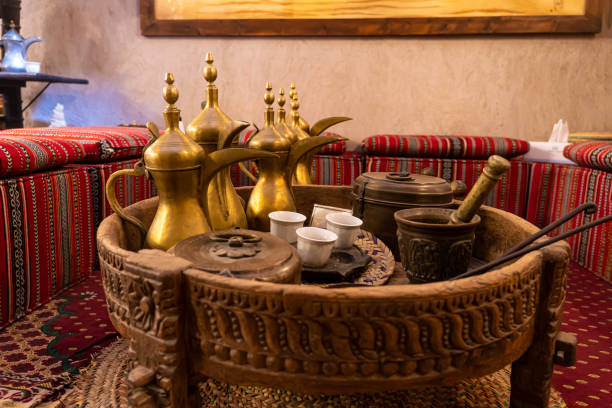In Coffee is far more than a daily pick-me-up—it’s a culture, a community, a comfort, and for many, a creative ritual. From the bustling cafés of Italy to the traditional coffee ceremonies in Ethiopia, this humble beverage carries a rich tapestry of stories, emotions, and global traditions. “In Coffee” dives deep into the world that exists behind every brew, exploring how this drink has become a universal language of connection and energy.
Whether you’re someone who savors your espresso in solitude or a social butterfly who thrives in the hum of a coffeehouse, the world of coffee offers endless fascination. It’s the first thing millions of people reach for in the morning, a centerpiece of countless social interactions, and a driving force behind entire economies and creative movements.
In this article, we’ll sip through the complex flavors of coffee culture, brewing artistry, diverse bean types, and the global communities built around this beloved drink. Buckle up—this isn’t your average coffee talk. We’re going deep in coffee.
The Global Coffee Craze
Coffee is consumed in every corner of the world, from Tokyo to Toronto, New York to Nairobi. It’s estimated that over 2.25 billion cups of coffee are consumed globally every single day. That’s more than just a trend—it’s a phenomenon.
The global coffee market is a booming industry valued at hundreds of billions of dollars. Major cities compete to host coffee expos, international latte art competitions, and café startups are sprouting on every block. Specialty roasters, third-wave cafés, and home-brewing influencers are shaping how we experience our favorite drink.
But with all the buzz, one thing remains timeless—coffee connects people. Whether over deep conversations, casual meetups, or intense brainstorming sessions, coffee is always in the middle.
H2: A Brief History of Coffee – From Ethiopian Hills to Global Cups
Where It All Began: Coffee’s Ancient Roots
Coffee’s origin story begins in the ancient highlands of Ethiopia, where legend has it a goat herder named Kaldi discovered the energizing effects of the coffee cherry after watching his goats prance excitedly post-snack. From there, coffee made its way into Yemeni monasteries where monks used it to stay awake during long prayers.
By the 15th century, coffee had become integral to Islamic culture and spread throughout the Middle East. Coffeehouses, known as qahveh khaneh, emerged as cultural hubs where people gathered to socialize, listen to music, and discuss politics—earning the nickname “Schools of the Wise.”
The European Coffee Invasion
Coffee landed in Europe in the 1600s, and its popularity exploded almost instantly. By the 17th century, coffeehouses had become intellectual hotspots in cities like London, Paris, and Vienna. These establishments were often called “penny universities” because, for the price of a cup of coffee, one could engage in enlightening conversations and exchange ideas.
Coffee in the Modern World
Fast forward to today, and coffee is woven into the very fabric of modern life. It has evolved from a sacred drink to a pop culture staple. From corporate chains like Starbucks to artisanal coffee roasters pushing the boundaries of flavor, the journey of coffee continues to be one of innovation, passion, and community.
H2: Understanding Coffee Beans – The Heart of Every Cup
Arabica vs Robusta – What’s the Difference?
The two primary types of coffee beans that dominate global production are Arabica and Robusta. Understanding the difference between them is key to appreciating what’s in your cup.
-
Arabica (Coffea Arabica):
-
Grown at higher altitudes
-
Smooth, sweet, and often floral or fruity in flavor
-
Contains less caffeine than Robusta
-
Represents about 60–70% of global coffee production
-
-
Robusta (Coffea Canephora):
-
Grown at lower altitudes and more resistant to pests
-
Bold, bitter, and earthy flavor
-
Higher caffeine content
-
Used in espresso blends and instant coffee for stronger kick
-
Most specialty coffee shops use 100% Arabica beans because of their superior flavor profile, while Robusta is favored for its cost efficiency and stronger body.
Single Origin vs Blend – Which Should You Choose?
-
Single Origin:
-
Sourced from one specific region or even one farm
-
Allows for unique, traceable flavor notes influenced by local soil and climate
-
Ideal for pour-overs and slow brews that highlight nuances
-
-
Blend:
-
Combination of beans from multiple sources
-
Balanced flavor, designed for consistency
-
Commonly used in espresso for reliability and body
-
Coffee connoisseurs often experiment with both to find their ideal cup. The choice depends on your palate and brewing method.
H2: Brewing Methods – Mastering the Art of the Perfect Cup
Pour-Over, French Press, Espresso & More
The way you brew coffee can drastically alter its flavor, strength, and texture. Let’s explore some popular methods:
-
Pour-Over (e.g., V60, Chemex):
-
Offers control over water temperature and extraction time
-
Produces a clean, vibrant cup with clear flavor notes
-
Perfect for single-origin coffees
-
-
French Press:
-
Full-bodied and rich
-
No paper filter, which allows oils to pass through
-
Ideal for medium to dark roasts
-
-
Espresso Machine:
-
High-pressure extraction for concentrated flavor
-
Base for drinks like lattes, cappuccinos, and americanos
-
Needs fine grind and quality beans
-
-
AeroPress:
-
Versatile and travel-friendly
-
Combines pressure and immersion brewing
-
Great for experimenting with ratios
-
-
Cold Brew:
-
Steeped in cold water for 12–24 hours
-
Low acidity, smooth, and often slightly sweet
-
Perfect for hot weather
-
Each method brings something unique to the table, and part of the joy of coffee is finding your favorite brew through trial and taste.


